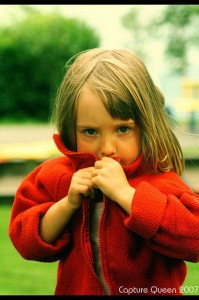
How do you know when your child’s fear is serious enough to be classified as an anxiety disorder?
An article from Neville J. King, et al. describes the behavior of a child with a phobia as maladaptive, persistent, and highly distressing. King describes normal childhood fears as “short-lived.”
For instance, your son or daughter may express fear or anxiety around certain animals. The typical reaction is for your child to cling to you and cry. An excessively fearful response might involve shaking, sweating, nausea, screaming, and other physical signs.
It’s important to talk to your child about his or her fears. By doing this, you can explain things he or she doesn’t understand and eliminate some of the fear. If this doesn’t work, there may be a deeper problem requiring professional attention.
Screening for Anxiety Disorders
King lists some of the most common and effective means of detecting childhood phobias. He explains the behavioral interview, structured diagnostic interviewing, parent and teacher reports, and behavioral observation.
Interviewing the Child
The behavioral interview involves a trained mental health specialist speaking with the child about experiences and feelings relevant to the object of fear. Specific questions about the source of fear, how it makes the child feel, and how the parents react are posed to the child. These issues are also discussed with the family. King calls the behavioral interview a “crucial step” in screening for anxiety disorders.
Structured diagnostic interviewing allows a therapist to determine if the child fits standard criteria for a disorder. Questions designed to identify certain symptoms and behaviors are asked to the child. The questions are taken from one or more psychological tests used to evaluate mental health in children.
Gathering Information
Parent and teacher reports are conducted to gather information about the child’s behavior. The adults use questionnaires, checklists, and rating scales to describe the child’s level of functioning and behavioral issues. This allows mental health professionals to see how the child acts in different contexts and, in some cases, how it affects his or her relationships.
Behavioral observation is another important step in diagnosing an anxiety disorder in a child. A trained mental health specialist can observe the child’s fearful behaviors directly or recreate an environment which will evoke the fearful response.
Final Suggestions
If you think your child may have an anxiety disorder, don’t hesitate to speak with a licensed professional. If anxiety is causing your son or daughter to behave in extreme ways or causing major stress, evaluation and treatment may be necessary.





